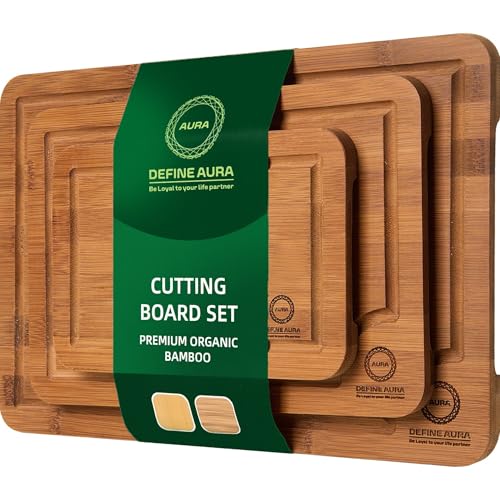So seems you, similar to me, being an environmentally friendly person, finally got yourself a bamboo cutting board and started utilizing it. Probably, besides being nature friendly, it is also durable, so you are happy, and it is pretty on the kitchen counter, almost like an obligatory kitchen tool. Not to mention that it helps you cook and many other things. What did we do afterwards? You chop raw meat, chicken, and fish on it too. Or maybe garlic. Then I (and you too from time to time) stand at the kitchen sink, thinking a little bit, wondering how to sanitize the bamboo cutting board without breaking, cracking, or ruining it. This question probably comes to mind from time to time for you too.
My Story of Adventure: sheer disappointment
As I mentioned, this situation happens to me every so often, as it certainly happens to you. In fact, let me regale you with my story of adventure using my first bamboo board. As an environmentally conscious person, I let the very first bamboo cutting board I bought sit overnight in the sink to soak. What do you suppose happened? Here’s the easy answer: I broke my bamboo cutting board. It’s also worth mentioning that this was during my initial phase. How was I to know that applying excessive water to bamboo would lead to sheer disappointment? After my experiences, I was eventually able to figure out how to clean it.
My Cleaning Method: gentle rubbing
Now, here’s what I do: First, I clean it as soon as I use it. That is, I don’t have a Netflix or YouTube break in between. I wash it immediately. A quick rinse in lukewarm water (make sure not to use hot or boiling water), and I’m finished. Then, I give it a gentle rubbing with a sponge and a dash of natural dish soap. Not too hard; a bit of kindness is okay. The dishwasher? Don’t even think about it. The dishwasher should be reserved for last resort use for a bamboo board.
Dealing with Smells and Stains: country spa
If there is any smell onion, fish, whatever I sprinkle the board with baking soda or coarse salt and scrub it in with half a lemon. Smells vanish, stains are gone, and it’s like some kind of country spa treatment for the board. And your hands smell like lemons afterwards. Win-win.
Drying and Oiling: a bit of
Now, then, about drying very important. I stand it up or prop it against the wall grain side down. It dries flat like that. Flat keeps the moisture in, and yeah. that’s when the warping begins.
Oh, and I sometimes (maybe once a month?), I rub some fractionated coconut oil or food-grade mineral oil into the surface. Tiny amount. It keeps it from drying out and cracking. Imagine it like moisturizer for your board. For real.
You don’t need to baby it, but give it a bit of respect and it will get you far. And if someone ever asks you to bleach it? Run. That isn’t a friend, that’s sabotage.












[…] to Care for Bamboo Cutting Boards the Right Way Sustainable Kitchen Tools & Cleaning TipsHow to Clean a Bamboo Cutting Board (Without Cracking It) Sustainable Kitchen Tools & Cleaning TipsHow to Sanitize Wooden Spoons Naturally Sustainable […]
[…] of my research and practical experience, I can give you the good news. Yes, you can disinfect your bamboo cutting board without using chemicals. The answer to the question, “How do we do this?” is in the […]
[…] you have a bamboo cutting board at home, and you first cut garlic on it and then cut strawberries, I must tell you that things will […]